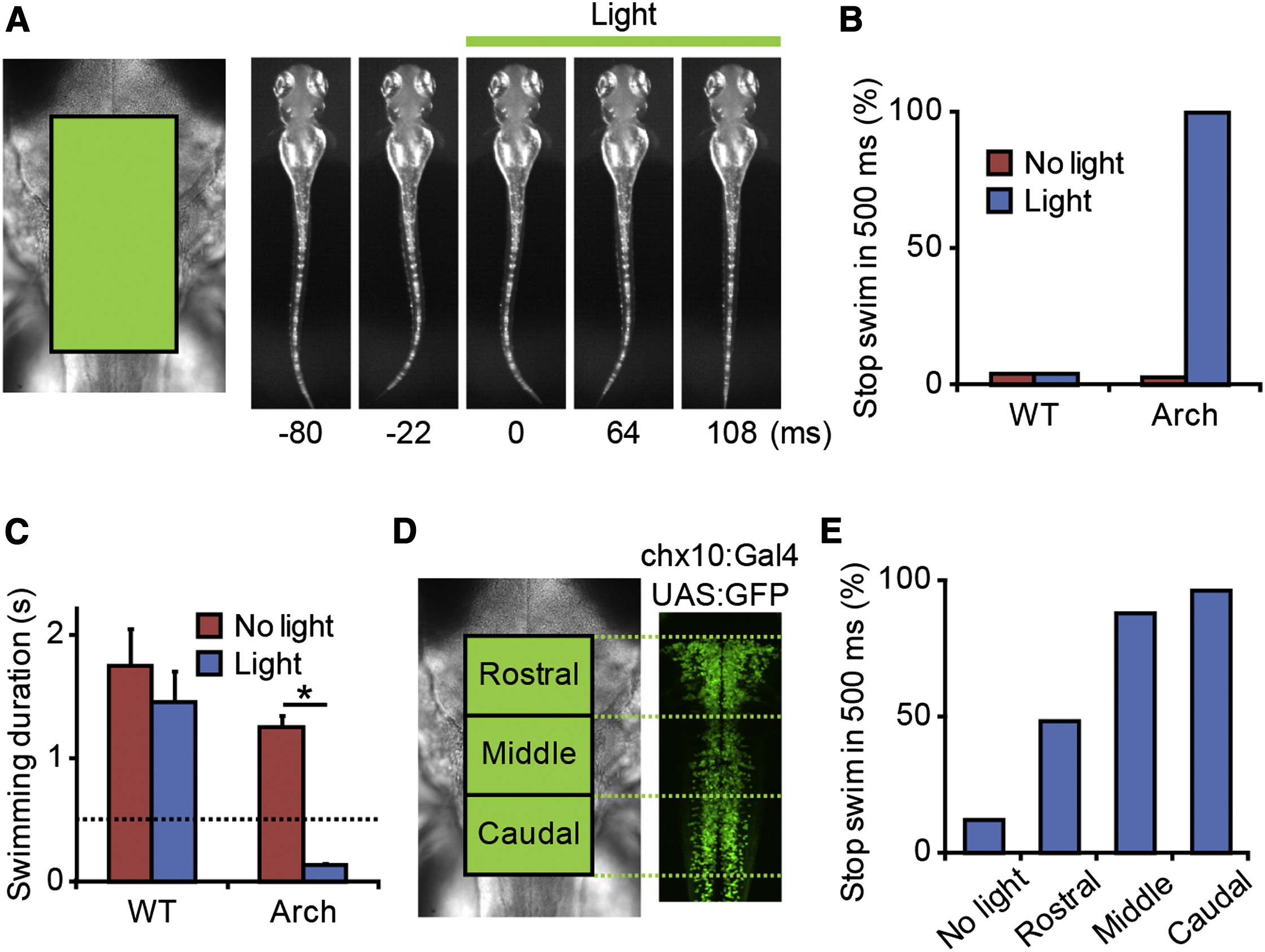Fig. 3 Inactivation of Hindbrain V2a Neurons Stops Ongoing Swimming Compound transgenic fish of Tg[chx10:Gal4] and Tg[UAS:Arch] at 3 dpf were used in the experiments. (A–C) Green light (30.5 mW/mm2, 500 ms) was applied to the boxed area (left panel in A) after swimming started (onset latency of the illumination was 200–400 ms). The application of the light stopped swimming (right panels in A). (B) Frequencies of stopping swimming within the illumination periods (500 ms). “WT” represents wild-type larvae, whereas “Arch” represents larvae that expressed Arch in V2a neurons. “No light” represents control experiments in which green light was not applied. In these cases, the duration of swimming was measured after the onset of the electric signal that would turn on illumination with the DMD. In nearly 100% of the trials, the application of green light stopped ongoing swimming in Arch-expressing larvae. Arch: n = 35, 7 animals; WT: n = 25, 6 animals. (C) Mean duration of swimming after the onset of illumination. Bars indicate SE. The dotted line indicates the illumination time. In the case of Arch-expressing larvae, the duration of swimming was significantly shorter (t test; p < 0.001). Arch: n = 35, 7 animals; WT: n = 25, 6 animals. (D and E) Green light (30.5 mW/mm2, 500 ms) was applied in a region-specific manner. (D) Illumination areas are shown. (E) Frequencies of stopping swimming within the illumination periods (500 ms). “No light” represents control experiments in which green light was not applied. n = 25, 5 animals.
Image
Figure Caption
Acknowledgments
This image is the copyrighted work of the attributed author or publisher, and
ZFIN has permission only to display this image to its users.
Additional permissions should be obtained from the applicable author or publisher of the image.
Full text @ Curr. Biol.

